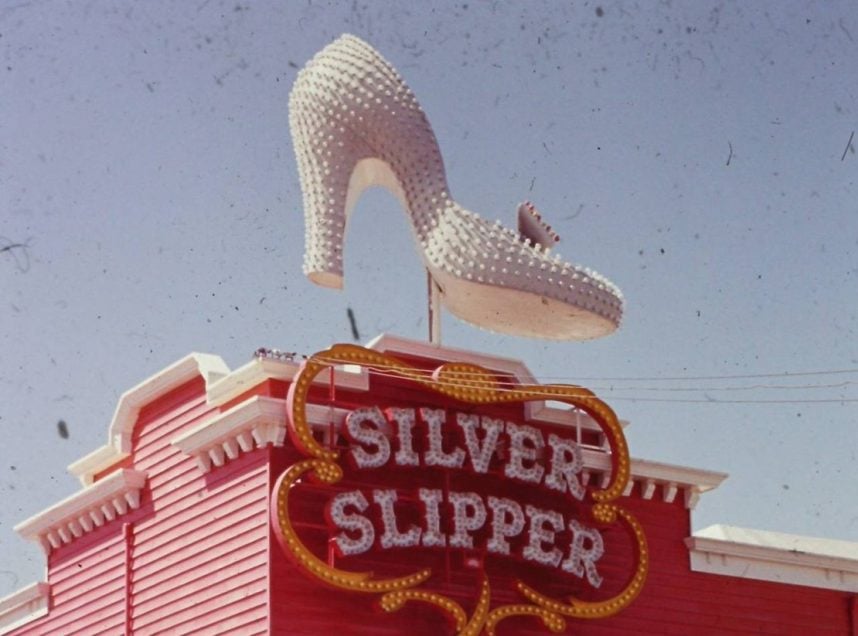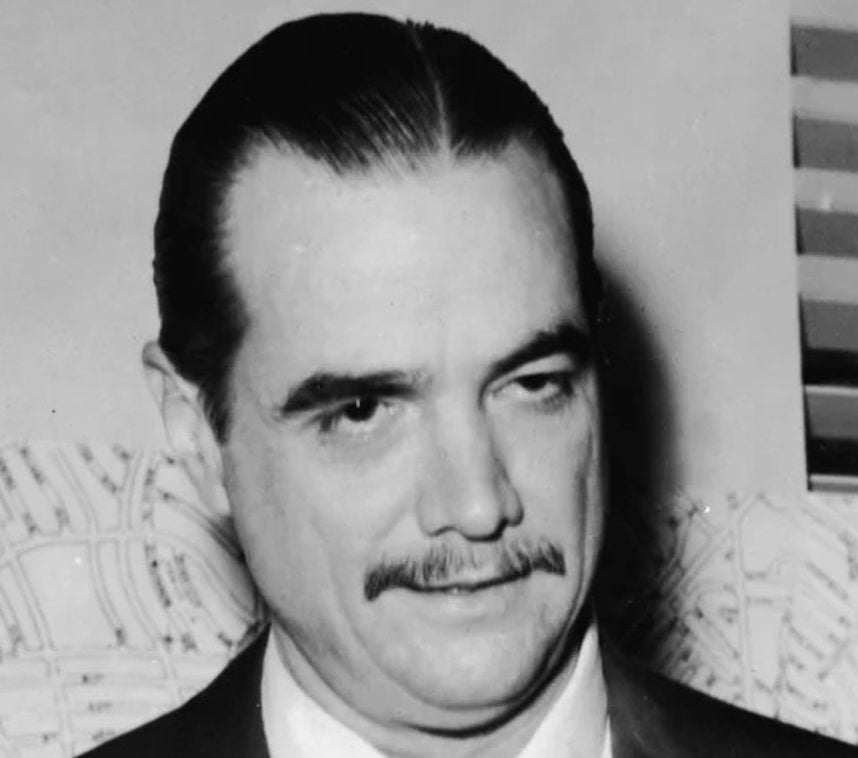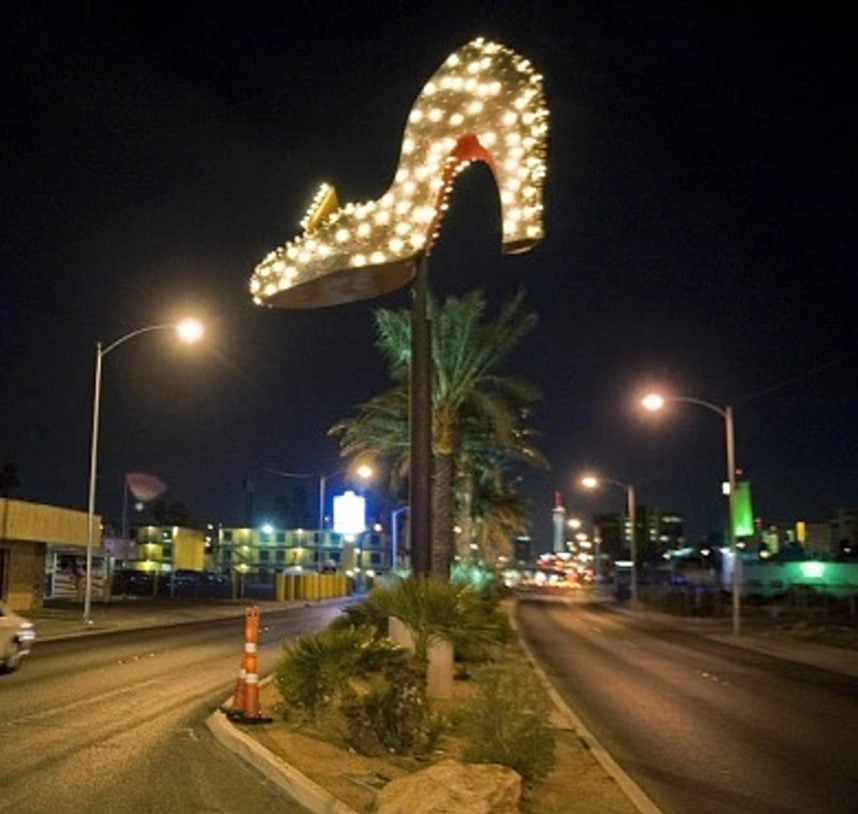
Vegas Myth Debunked: Howard Hughes Didn't Buy Silver Slipper Over Bright Sign
Howard Hughes, the famous aviator and movie tycoon, reportedly purchased the Silver Slipper casino in Las Vegas because its bright, rotating shoe sign disturbed his sleep at the Desert Inn. However, this popular myth is entirely false.
The 12-foot tall, 17-foot wide Silver Slipper sign, designed by former Disney animator Jack Larsen Sr., featured 900 lightbulbs on the shoe and 80 on the bow. It was installed around 1954-1955 and operated until 1988.

Las Vegas Silver Slipper sign, 1965
Why the myth is false:
- Hughes kept his drapes completely drawn 24/7, making it impossible for any light to disturb him
- The timeline doesn't match - Hughes began buying casinos in March 1967 but didn't purchase the Silver Slipper until April 30, 1968
- The nearby Frontier's sign was actually larger and brighter
- The myth originated from an erroneous newspaper report that was later quietly retracted

Howard Hughes portrait in black-and-white
The real story:
Hughes began buying Las Vegas properties when the Desert Inn tried to evict him from his penthouse suite. His first purchase was the Desert Inn itself for $13.2 million, followed by several other properties including the Silver Slipper for $5.4 million. According to Paul Winn, Hughes' director of corporate records, the Silver Slipper purchase was simply "because it was available, no other reason."

Illuminated neon shoe sign
Today, the original Silver Slipper sign has been restored and stands in a median along Las Vegas Boulevard North as part of the Neon Museum's collection, preserving this piece of Vegas history despite the myths surrounding it.
Related Articles

Las Vegas Casinos Never Employed 'Coolers' to Break Winning Streaks, UNLV Expert Confirms

